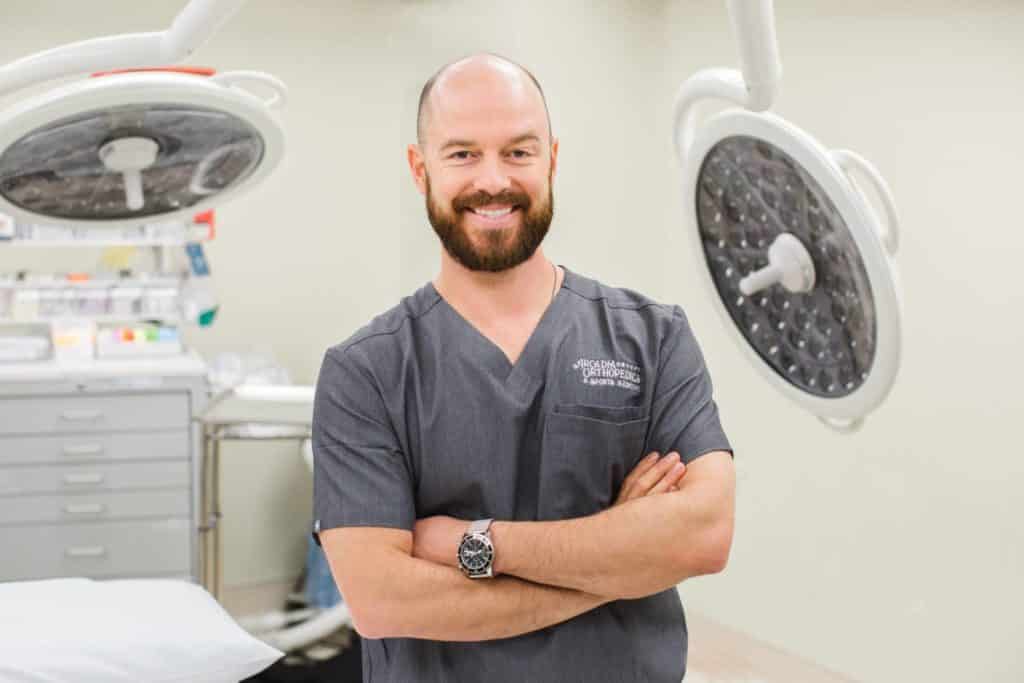
Achilles tendinitis, often categorized as tendinopathies, can become debilitating and often keep athletes off the field or trails for an extended time. The Achilles tendon is the largest tendon in the body and has muscular extensions above the knee which is why knee and foot range of motion is important as well. Various Achilles pathologies exist and are a part of an everyday foot and ankle or sports medicine practice. Here we discuss Achilles Tendinitis Treatment and Recovery research and current modalities such as shockwave therapy.
Acute ruptures can often occur in scenarios when an athlete comes down on one leg or pushes off with excessive force. This can cause the diseased tendon to tear, or rupture, at the watershed area, where the tendon has the least amount of blood supply. These are serious injuries and typically require an extensive recovery and most often surgical repair.
Chronic injuries occur slowly over time as the tendon develops micro-tears from repeated trauma. The tendon then develops dense fibrotic scar tissue and becomes very thick and painful. Athletes will often have pain slowly over the course of activity, such as running, hiking, basketball, and triathlon. The pain can radiate down to the insertion of the Achilles on the heel bone or calcaneus or even up into the calf. Most athletes also have a difficult time remembering to stretch pre- or post-workout. This is important because the Achilles tendon and muscle group will develop scar tissue the tighter it gets.
Let’s look into how we treat chronic Achilles tendinitis and recovery strategies.
A recent article on Achilles tendinitis treatment out of Foot and Ankle Specialist highlights the advantages of combining an eccentric training protocol and low-energy shockwave therapy for the treatment of insertional Achilles tendinitis. The authors evaluated 19 consecutive patients over a period of 24 weeks. For 12 weeks, patients performed an eccentric Achilles strengthening program daily and shockwave therapy every other week.
Activities were slowly re-introduced at week 4 with cycling and running on flat surfaces. Results indicated high clinical outcomes scores at the end of the protocol and adherence to the strengthening protocol was paramount of a patient’s success. (Mansur NSB et al. Foot Ankle Spec. 2019 Feb 2:1938640019826673) This article is just one of many that are providing specialists with the knowledge to treat these painful injuries.
The Shockwave Therapy device that we use as a standalone treatment, but often in combination with other therapies for post-op rehab and recovery and non-operative rehab and recovery.
“Shockwave therapy is just part of the treatment plan for athletes with chronic Achilles pain,” stated Dr. Jeffrey E. McAlister, Arcadia Orthopedics and Sports Medicine foot and ankle specialist. “Here at AOSM, we focus on non-operative, functional treatments that keep our Phoenix community active, such as regenerative medicine, cold compression therapy with Game Ready, and shockwave therapy.”
These tools combined with a strict Achilles strengthening protocol will offer a high-end non-operative treatment course focused on edema control, reducing pain receptors and utilizing the body’s natural healing cascade to heal the Achilles.“We pride ourselves on balancing up-to-date science with healthcare technology for our patients,” stated Dr. McAlister. “We understand athletes and their needs and aim to provide them with the best treatment options available.”
Dr. Jeffrey McAlister, DPM, FACFAS is a board-certified, fellowship-trained foot and ankle surgeon who practices in Phoenix, Arizona. Dr. McAlister is a partner at Arcadia Orthopedics & Sports Medicine in the Arcadia neighborhood of Central Phoenix. We thank him for contributing to our blog!